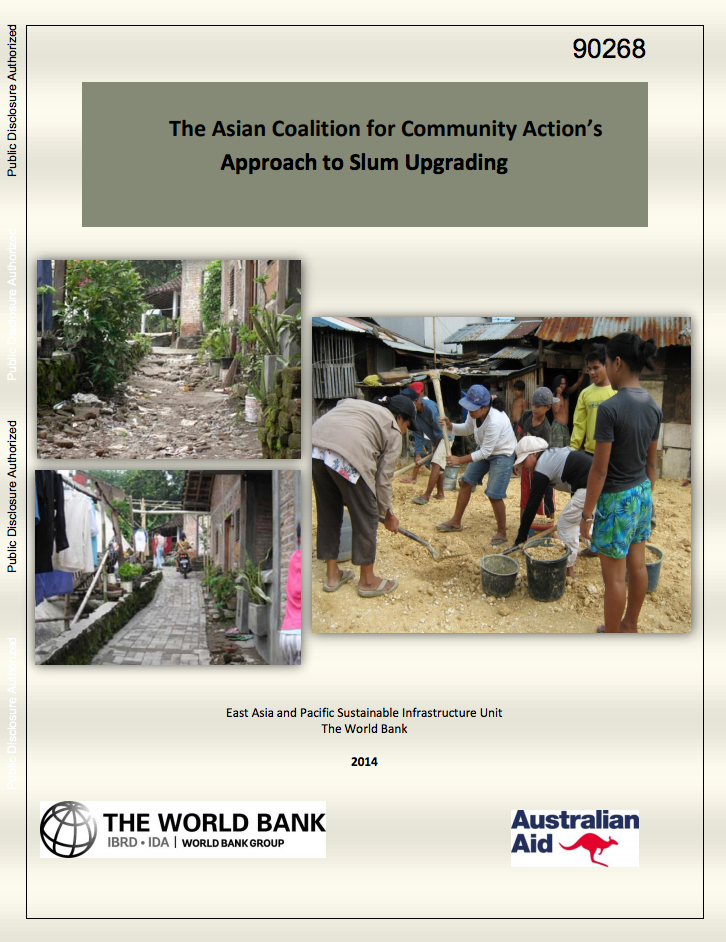The World Bank is a vital source of financial and technical assistance to developing countries around the world. We are not a bank in the ordinary sense but a unique partnership to reduce poverty and support development. The World Bank Group has two ambitious goals: End extreme poverty within a generation and boost shared prosperity.
- To end extreme poverty, the Bank's goal is to decrease the percentage of people living on less than $1.25 a day to no more than 3% by 2030.
- To promote shared prosperity, the goal is to promote income growth of the bottom 40% of the population in each country.
The World Bank Group comprises five institutions managed by their member countries.
The World Bank Group and Land: Working to protect the rights of existing land users and to help secure benefits for smallholder farmers
The World Bank (IBRD and IDA) interacts primarily with governments to increase agricultural productivity, strengthen land tenure policies and improve land governance. More than 90% of the World Bank’s agriculture portfolio focuses on the productivity and access to markets by small holder farmers. Ten percent of our projects focus on the governance of land tenure.
Similarly, investments by the International Finance Corporation (IFC), the World Bank Group’s private sector arm, including those in larger scale enterprises, overwhelmingly support smallholder farmers through improved access to finance, inputs and markets, and as direct suppliers. IFC invests in environmentally and socially sustainable private enterprises in all parts of the value chain (inputs such as irrigation and fertilizers, primary production, processing, transport and storage, traders, and risk management facilities including weather/crop insurance, warehouse financing, etc
For more information, visit the World Bank Group and land and food security (https://www.worldbank.org/en/topic/agriculture/brief/land-and-food-security1
Resources
Displaying 1351 - 1355 of 4907The Cost Structure of the Clean Development Mechanism
This paper examines the cost of
producing emission reduction credits under the Clean
Development Mechanism. Using project-specific data, cost
functions are estimated using alternative functional forms.
The results show that, in general, the distribution of
projects in the pipeline does not correspond exclusively to
the cost of generating anticipated credits. Rather,
investment choices appear to be influenced by location and
Africa's Pulse, April 2013 : An Analysis of Issues Shaping Africa's Economic Future
This Africa's pulse newsletter
includes the following headings: Sub-Saharan African
countries continue to grow at a steady pace; the
region's decade-long economic expansion appears
sustainable; and for newly resource-rich countries, strong
governance will be key to harnessing resource wealth for development
The Asian Coalition for Community Action's Approach to Slum Upgrading
This paper is a review of the experience of the Asian Coalition for Community Action (ACCA) Program operated by the Asian Coalition for Housing Rights (ACHR).
Taking Stock : An Update on Vietnam's Recent Economic Developments, July 2014
Global growth is projected to pick up to 3.4 percent in 2015 and 3.5 percent in 2016, propelled by highincome countries. Developing country growth will benefit from these tailwinds, with growth projected to increase from 4.8 percent in 2014 to 5.5 percent in 2016 broadly in line with potential. Global growth projections for 2014, however, have been marked down from 3.2 percent to 2.8 percent on account of the bumpy start this year, buffeted by poor weather in the United States, financial market turbulence and the conflict in Ukraine.
Investing in Natural Capital for Eradicating Extreme Poverty and Boosting Shared Prosperity : A Biodiversity Roadmap for the WBG
The World Bank Group (WBG) has a long
experience in engaging in biodiversity with world-class
expertise in the field. It has been the single largest
funder of biodiversity investments since the late 1980s. The
WBG investments have largely been of two kinds: (1)
investments in biodiversity, aimed at the conservation and
sustainable use of species, habitats, and ecosystems that
sustain healthy ecosystems, while enhancing people's








